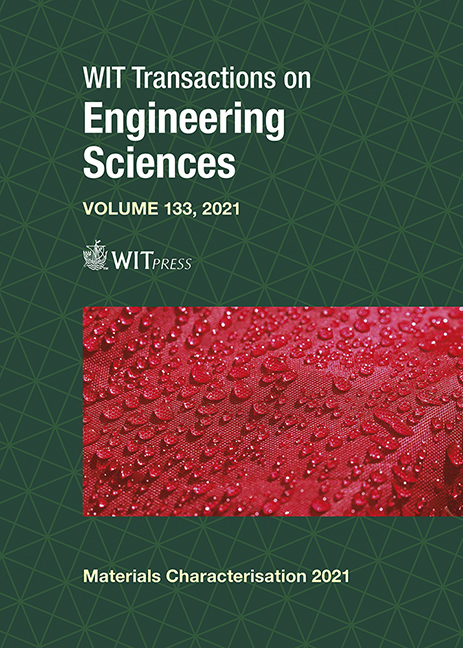THERMAL AND FIRE BEHAVIOUR OF CEMENT BLOCKS WITH RECYCLED ROOF WASTES
Price
Free (open access)
Transaction
Volume
133
Pages
5
Page Range
101 - 105
Published
2021
Paper DOI
10.2495/MC210101
Copyright
Author(s)
RAQUEL ARROYO, LOURDES ALAMEDA, ALVARO ALONSO, SARA GONZÁLEZ, VERÓNICA CALDERÓN, SARA GUTIÉRREZ, ÁNGEL RODRÍGUEZ
Abstract
In accordance with the European politics of reducing the amount of plastics and polymers sited in landfills, the inclusion of compounds such as roof wastes as recycled and reusable materials to replace variable amounts of aggregates is interesting in the production of new construction materials due to their physical and chemical behaviour. Mortars made with Portland cement, sand, water and grinded roof wastes from the automobile industry that replace in different amounts part or all of the aggregates are examined in this study. To try to avoid the mechanical resistance limitation due to the use of roof wastes, the chemical properties of the binders have been modified with non-ionic surfactants that changed the effect on the hydration of the clinker. This variation produces an important change in the mechanical resistance to achieve recycled structural materials with a low density compared to conventional light mortars. In addition, these additives improve other properties including workability, compaction of the matrix, prevent the disintegration of the particles and help to improve the mechanical properties, ductility, thermal resistance and durability against fire to reinforce the materials. These ecomortars have a lower thermal conductivity as more quantity of roof wastes are incorporated, which greatly favours the thermal insulation of the final envelope, as well as a good behaviour against temperature, measured in terms of thermogravimetry and non-combustibility test. With these results, we can consider the use of roof wastes as a sustainable alternative to the materials currently used and then with them we can be able to contribute to a more ecological business model in the building sector.
Keywords
recycled ceilings, lightweight prefabricated, fire resistance, polyurethane





